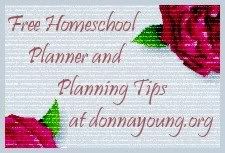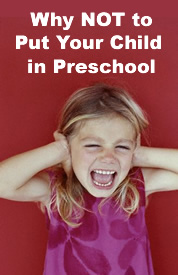What Your Baby Really Needs, Age-by-Age
Posted by homeschoolmentormom on August 16, 2012
As promised, I am continuing my series on providing the best for our youngest children. Today we will tackle the needs of young children from 9-12 months, 12- 18 months, and 18-24 months. The next post will cover three, four and five year-olds.
Remember, it is assumed that you are continuing what started at infancy–and at each stage before, as appropriate: Working to build a close relationship with your baby, teaching your baby about the Lord, praying for and with your baby, playing with your baby, reading to him, singing and talking to him, and so on. This post is simply meant to help you see what is going on with your baby, and how you can optimize their development at each stage.
9-12 months: Crawling, cruising, walking, climbing–perhaps even talking! Baby is learning or doing something new every day…often something that will amaze you. Be sure to keep a close eye on your baby. This is difficult, since we all have to go to the bathroom sometime! I warn you because this is the age when you are likely to walk into a room only to find your baby perched on top of the piano, as my mother did with me.
Try to keep your baby interested in the things you want her to explore. Set toys out on your coffee table so that baby can cruise around the table and play with toys from a new perspective. Babies love push and pull toys at this age—these toys help them with their balance and teach them cause and effect, as well.
Try pulling the cushions off your couch and making a “baby obstacle course”—or putting blankets over a table to make a tent.
At this age, my babies loved push-along walkers like these. They also loved things that go: Balls, cars, etc. There is never a dull moment at this age, to be sure, but your baby will never be more fun, either!!
12-18 months: Your baby is now officially a toddler! Baby understands more and more, and is learning how to communicate through pointing, gesturing, and making sounds. The number of words your baby will understand or be able to use is directly related to how much time you spend talking and reading to him, so keep it up! Most babies this age will have quite a few words: “mama”, “dada”, “bye-bye”, “uh-oh”, “all gone”, and so on. Some baby’s first word is “NO!” Soon he will be stringing words together to make sentences
Some parents discover that this age is the real start of the “terrible twos”, and also, of a need for (gentle, but firm) discipline. Now is the time to begin to teach your baby to come when called, and to respond to the words “stop” and “no,” if you haven’t already. Thank-goodness toddlers are still easy to pick up and carry away from the carnage, when necessary.
Part of the reason baby gets so frustrated is because he can understand far more than he can express. If you want to help your baby communicate more efficiently, consider learning some sign language and teaching it to your baby. Sign language is proven to decrease frustration and tantrums, and increase baby’s abilities to communicate (many parents start doing this when their babies are tiny.)
Your baby is learning lots of new skills and wants to try them out–sometimes in inappropriate ways. Additionally, you should know that some babies have the tendency to concentrate so intently on their emerging skills that other skills are put on the back burner for a while.
Babies this age usually love alphabet blocks, stacking and nesting cups, and best of all, plastic jars and small toys for filling and dumping (dropping toys into the plastic jar, and then dumping them out.) I used to clean out old plastic milk cartons and then cut a small slit near the top, and a larger one (large enough for hands to reach in) near the bottom. All my babies loved fitting the lids from baby food jars into the top slot, and then watching them fall through to the bottom. (Tip: Discovery Toys has some of the best toys for babies that I have ever seen.)
18-24 months: Baby’s daily routine is changing, sometimes day by day. Some babies this age are ready to give up their morning nap. Your baby’s daily routine can now be expanded to include first art experiences. Start by finger painting with pudding in the high chair and then introduce fat crayons, play dough, stickers, etc. Watch carefully that your baby doesn’t eat the art supplies!
Music is very important for toddlers. Play classical music quietly in the background during playtime, and be sure to introduce children’s music by artists such as Raffi (the Singable Songs for the Very Young collection is a great choice), Linda Arnold (Bathtime Magic is my favorite—and yes, we’d play it during bath time!), Parachute Express, or the Wee Sing Series (especially Wee Sing and Play), if you haven’t already. Sing to your toddler in the bathtub (“I’m gonna wash that dirt right outta your hair” from the movie South Pacific) and during your daily routine (“This is the way we wash our hands”, and so on.) Check out a whole day’s worth of singing ideas at This Reading Mama.
Baby should love to be read to now, and have books available to look at whenever he wants them. Babies this age love books that teach sounds (what does the duck say?), and books that include repetition. For suggestions, read my post titled, “Reading Aloud to Babies and Toddlers.”
© 2012 Susan Lemons all rights reserved. Copyrighted materials may not be re-distributed or re-posted without express permission from the author.






Leave a comment